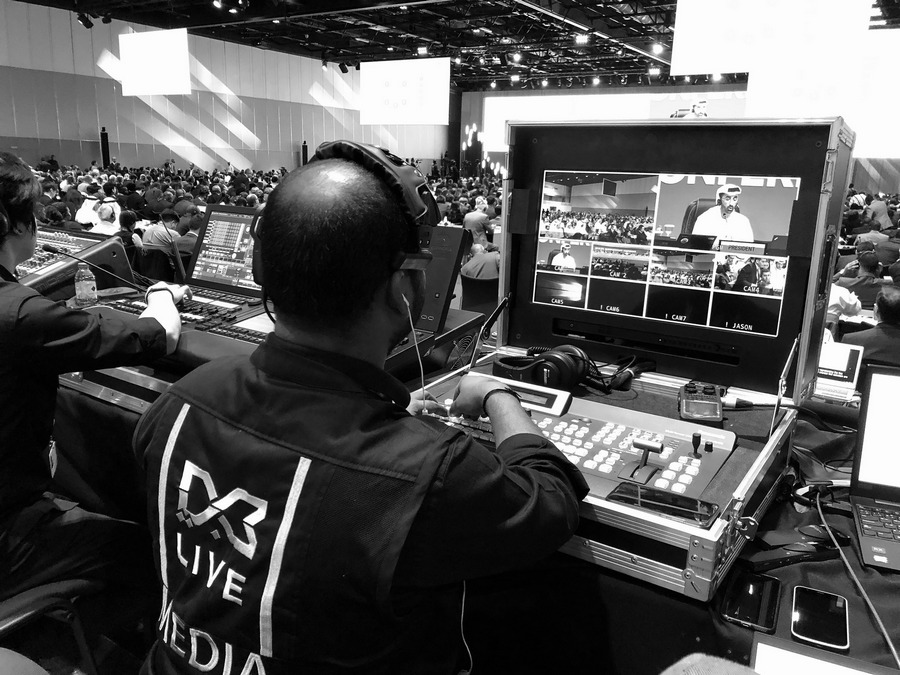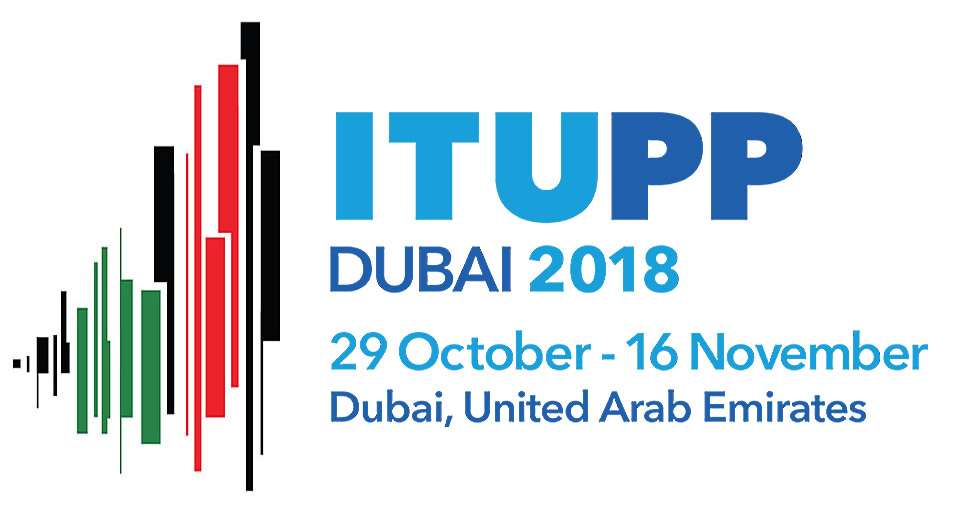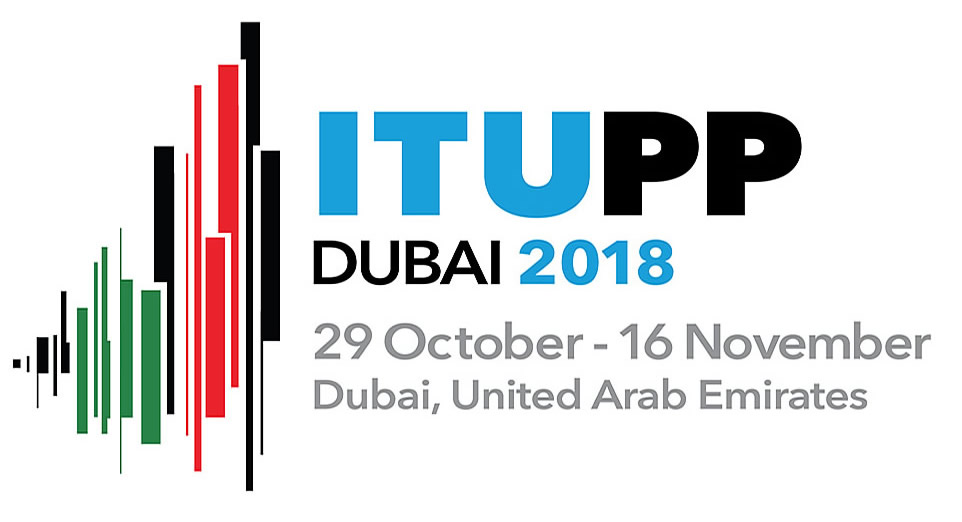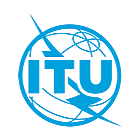
In the final days of the ITU Plenipotentiary Conference 2018, a number of key resolutions have been agreed upon.
Strategic plan for 2020-2023
ITU Member States adopted a revised resolution to set the vision and shared goals and targets of the Union for 2020-2023, asserting ITU’s role in facilitating progress towards the implementation of the United Nations 2030 Agenda for Sustainable Development.
As we approach the 50/50 milestone moment for Internet connectivity, in which half the world’s population will be connected, far too many people around the world are still waiting to reap the benefits of the digital economy. Substantial digital divides persist within and between countries. For instance, men, urban residents and young people are more likely to be online than women, rural dwellers and older people. Divides often stem from insufficient or slow connectivity, the cost of connection and a lack of relevant content in local languages.
ITU Member States are expected to achieve many of the Connect 2020 targets set on connectivity before the year 2020. They adopted new bold and ambitious targets to be achieved by 2023 (e.g., 70% of individuals worldwide will be using the Internet; improve by 40% the proportion of youth/adults with telecommunication/ICT skills). These are divided into five strategic goals: growth; inclusiveness; sustainability; innovation; and partnership.
Information and communication technologies can help accelerate progress towards every single one of the 17 United Nations Sustainable Development Goals (SDGs). The new revised resolution on the Strategic plan for the Union for 2020-2023 outlines how ITU will contribute to the worldwide efforts to achieve the SDGs.
Fostering telecommunication/ICT-centric innovation
ITU Member States have approved a new resolution on fostering telecommunication/ICT-centric innovation to support the digital economy and society.
‘Innovation’ means different things to different people. It can encompass blue-sky thinking, the discovery of startling scientific breakthroughs or every-day, but important incremental improvements to existing technologies or factory processes on the shop floor. Innovation – and innovative technologies more generally – are credited with driving economic growth and changing the face of telecommunications as we know it.
A significant body of research now exists as to what is needed to facilitate a broader ‘innovation ecosystem’. The Digital Innovation Profile analyses the current state of a national innovation ecosystem with comparable measurements of the national ICT innovation capabilities in an international context.
ITU Member States resolve that ITU should support the Member States, upon request, in promoting an enabling environment for telecommunication/ICT-centric innovation by small- and medium-sized enterprises (SMEs), start-ups, incubation centres and young entrepreneurs, supporting relevant activities with other international agencies. ITU is further requested to collaborate with other UN agencies and other international organizations to assist Member States in providing capacity building related to digital skills, which are considered core foundation for digital transformation.
ITU Member States, Sector Members, Associates and Academia are invited to contribute by sharing their experiences and expertise on fostering innovation. ITU Member States are invited to promote widespread affordable access to telecommunication/ICT services by supporting telecommunication/ICT-centric innovation ecosystem through encouraging competition, innovation, private investment and public-private partnerships.
ITU’s work relating to ‘over-the-top’ services (OTTs)
ITU Member States have approved a resolution that seeks to outline the scope of ITU’s activities relating to services that run “over-the-top” (OTTs) of existing telecommunications infrastructure.
The evolution of the telecommunication/information and communication technology sector has led to new market structures, business models, investment strategies and revenue streams in which OTTs have played an increasing role.
In light of this, the resolution recognizes that mutual cooperation between OTTs and telecommunication operators can be an element to foster innovative, sustainable, viable business models and their positive roles in fostering socioeconomic benefits.
The resolution also recognizes the need to discuss policy issues, as well as the economic implications of OTTs. Given the global nature of many OTTs, the resolution recognizes that collaboration across multiple Member States and Sector Members should be strongly encouraged.
The resolution resolves to:
- raise awareness and promote a common understanding and dialogue among relevant stakeholders for enabling OTT environment and ecosystem within the remit of ITU;
- continue fostering studies on OTT aspects, within the ITU mandate;
- foster capacity building programmes among ITU members in order to share information related to best practices and technical guidance on OTTs especially for developing countries.
It instructs the Directors of ITU’s three Bureaux to foster studies in relevant ITU Study Groups on different OTT aspects, such as technical, economic, and policy aspects which may have international considerations; and, upon request, to assist ITU Member States to apply, as appropriate, the relevant outcomes of the Study Groups related to ОТТ.
Deployment of future networks in developing countries
ITU Member States have approved a revised resolution to continue ITU’s work relating to the deployment of future ICT networks in developing countries.
Future networks, such as 5G (IMT-2020), are set to play a pivotal role in the digital economy. They will support applications such as smart homes and buildings, smart cities, 3D video, work and play in the cloud, remote medical surgery, virtual and augmented reality, and massive machine-to-machine communications for industry automation and self-driving cars.
Future networks will also drive substantial transformation in many development-related sectors including health, education, financial inclusion and food security, making them a key accelerator towards achievement of the United Nations Sustainable Development Goals (SDGs). That’s why many countries have begun to implement national, regional and international strategies for realizing the vision of a digital economy, for which future networks will form the basis.
The revised resolution notes that it is now important for countries to facilitate a smooth transition from existing networks to future networks.
The resolution instructs ITU to continue its work on future networks deployment studies, ICT standards development, training activities and the sharing of best practices on business-model evolution and operational aspects.
Connectivity to broadband networks
ITU Member States have approved a revised resolution to improve connectivity to broadband networks. Broadband networks are recognized as one of the foundations of modern infrastructure and vital to national competitiveness. Indeed, today, broadband can be combined with power, transport and sanitation infrastructure in smart cities to create ‘smart’ infrastructure and management systems.
Broadband has been defined by the UN Broadband Commission for Sustainable Development as ‘always-on’, ‘high-capacity’ and, as such, enabling the ‘combined provision’ of multiple services (voice, data and video) at the same time. Broadband infrastructure now enables a host of other services and applications essential for modern living, including navigation tools, digital financial services, learning, activity and health applications.
ITU recognizes the importance of broadband technologies for developing countries, especially when it comes to achieving the United Nations Sustainable Development Goals.
The updated resolution notes that broadband connectivity is vital for social, economic, cultural and environmental development, and that broadband plans, policies and strategies are important to support its deployment.
The updated resolution instructs the Director of ITU’s Telecommunication Development Bureau to continue to work closely with the Director of the Radiocommunication Bureau and the Director of the Telecommunication Standardization Bureau on capacity-building activities that would enable countries to develop and implement their respective national strategies to facilitate the deployment of broadband networks, including wireless broadband networks.
ITU's role in providing technical assistance and advice
ITU Member States approved a resolution outlining ITU’s role in providing technical assistance and advice to developing countries and in implementing relevant national, regional and interregional projects.
This continues to be important work, considering that advances in telecommunication systems are enabling sustainable and affordable access to crucial ICT services that are now improving the lives of billions of people – and considering that ICTs now serve as a fundamental driver of economic and social growth.
The resolution endorses deeper collaboration among the different ITU Sectors with a view to carrying out studies and activities, including capacity building, for the provision of better advice and technical assistance to developing countries for optimal use of resources and the execution of national, regional and interregional projects.
ITU Member States also resolved that ITU should harness the potential and opportunities from new and emerging technologies and assist countries, in particular developing countries, that request support for their infrastructure development plans, taking into account their technological migration plans. Member States also resolved that ITU’s Telecommunication Development Bureau should continue to provide highly qualified technical experts to offer advice in subjects of importance to developing countries, taking into account national or regional connectivity plans, so that the actions carried out give effect to the priority aspects of these plans and the impact of the action undertaken serves the achievement of national, regional and ITU goals.
Child Online Protection
ITU Member States revised a resolution to continue to strengthen ITU’s work on Child Online Protection (COP).
In today’s hyper-connected world, children are coming online at younger ages than ever before. Billions of children worldwide now use connected mobile devices. While this opens new opportunities for innovative education, it also brings a variety of risks, ranging from predatory behavior to cyberbullying to exposure to inappropriate and harmful content.
To address these risks, ITU launched the Child Online Protection (COP) Initiative in November 2008 as a multi-stakeholder effort within the Global Cybersecurity Agenda (GCA) framework. The initiative brings together partners from all sectors of the global community to create a safe and empowering online experience for children around the world. The initiative works with partners to develop sets of guidelines, resource toolkits, and activities with partners, to minimize risks to children online and to ensure that the Internet brings benefits to all users.
In the next 4 years, the initiative will aim to work with Member States and COP partners to disseminate methodological frameworks for data production and statistics with the purpose of maximizing data comparison among countries. It will also update, as appropriate, the guidelines with some references for children with disabilities and specific needs and continue to assist Member States, in particular developing countries, develop their national COP strategies in collaboration with stakeholders.
Assisting Member States to combat and deter mobile device theft
ITU Member States updated a resolution to combat and deter mobile device theft, and assist governments and regulators with monitoring, data and the exchange of best practices on the issue.
As mobile phones have become increasingly central to our lives, their theft and loss are becoming more serious. High-end mobile devices may be deliberately targeted by thieves for their desirability and ease of access. In reality, much of the real value of a phone may reside in its personal data, contact directory and photos or videos of sentimental value. Stolen and lost phones can result in the loss of important and valuable data that may never be recovered (such as photos), and can also result in identity theft and fraud.
Cell phone protection tools and regular back-ups are vital. Operators and manufacturers are already developing sophisticated security features on phones (e.g. apps that trace the location of a stolen handset and can block its use remotely) and remote data-erasure tools. Governments, national statistical offices and telecom/ICT regulatory agencies are exchanging best practices and launching awareness campaigns.
The revised resolution now calls on Member States and Sector Members to facilitate education initiatives in order to reduce the use of stolen mobile devices – and to adopt, as needed, the necessary actions to prevent, discover and control tampering with (making unauthorized changes to) and replication of mobile ICT device identifiers, and prevent devices with tampered/replicated identifiers from accessing mobile networks.
ICTs for persons with disabilities and persons with specific needs
ITU Member States have approved a revised resolution on telecommunication/ICT accessibility for people with disabilities and people with specific needs.
The World Health Organization estimates that there are one billion people living with varying degrees of physical, sensory or cognitive disabilities in the world. ICTs can provide opportunities and benefits for people with visual, hearing or motor disabilities and persons with specific needs to overcome challenges in carrying out even the most ordinary everyday activities.
ICTs offer prospects of making simple activities easier – for example:
- Captioning already helps people who are deaf or hard of hearing follow television or radio or interact with friends and family via telephone.
- Screen readers provide support for visually impaired to access content displayed in screens, in particular in Internet-enabled devices.
- Robots already help provide some form of support to persons with disabilities, including older persons.
- Glasses assisted by artificial intelligence, equipped with facial recognition technologies, could help the visually impaired to ‘recognize’ people or officers (according to their uniforms).
- Facial recognition and digital photo albums can help people with amnesia or dementia to identify close friends and family, even when they have experienced short- and/or long-term memory loss.
- Autonomous or self-driving cars could help visually-impaired people drive themselves to different places independently and/or alone.
- Sensors and steering technologies can help facilitate wheelchair navigation.
- Navigational tools can help people with vision impairment or amnesia (weak or no sense of direction) get around town.
The revised resolution now instructs ITU to share best practices implemented in favor of accessibility to telecommunications/ICTs for people with disabilities and persons with specific needs and to promote the collection and analysis of statistical data on disabilities and accessibility to telecommunications/ICTs that Member States can consider when preparing and designing their own public policies to promote accessibility.
Strengthening ITU’s regional presence
ITU Member States adopted a revised resolution to further strengthen the regional presence as an extension of ITU as whole.
The regional and area offices enable ITU to be more aware of and more responsive to the priorities and specific needs of the regions.
The role of ITU regional offices is to assist countries in the regions in bridging the standardization gap, providing capacity-building related to radio-frequency management, and strengthening collaboration with regional telecommunication organizations. As such, ITU Member States resolved that regional and area offices shall actively engage in the implementation of the Strategic Plan for the Union for 2020-2023.
The updated resolution instructs the Director of ITU’s Telecommunication Development Bureau, in close consultation with the Secretary-General and the Directors of the Radiocommunication Bureau and the Telecommunication Standardization Bureau, to take the necessary measures for further strengthening the regional presence as an extension of ITU as whole.
Mainstreaming a gender perspective in ITU and promotion of gender equality and the empowerment of women through telecommunications/information and communication technologies
ITU Member States revised a resolution to strengthen efforts to make progress on gender equality within ITU and in the ICT sector.
The revised resolution also encourages Member States and Sector Members to review and revise, as appropriate, their respective policies and practices to ensure that recruitment, employment, training and advancement of women and men in the ICT sector are undertaken on a fair and equitable basis. It also encourages them to facilitate the capacity building and employment of women and men equally in the telecommunication/ICT field, including at senior levels of responsibility in telecommunication/ICT administrations, government and regulatory bodies and intergovernmental organizations and in the private sector.
Member States also resolved to:
- continue the work being done at ITU to promote gender equality in telecommunications/ICTs by recommending measures at the international, regional and national level on policies and programmes that improve socio-economic conditions for women and girls, particularly in developing countries;
- accord high priority to the incorporation of gender policies in the management, staffing and operation of ITU, so that ITU can become a leading organization in the implementation of gender-equality values and principles to take advantage of the possibilities offered by ICTs to empower both men and women;
- incorporate the gender perspective in the implementation of the ITU strategic and financial plans as well as in the operational plans of the Sectors and the General Secretariat;
- have ITU compile and process statistical data from countries and draw up indicators that take into account gender equality issues and highlight trends in the sector, disaggregated by socio-economic factors, in particular sex and age.
Behind the scenes

It took 8 days for 6 ITU network staff plus local support staff to prepare the IT infrastructure for PP-18.
View more sneak peek photos here.



